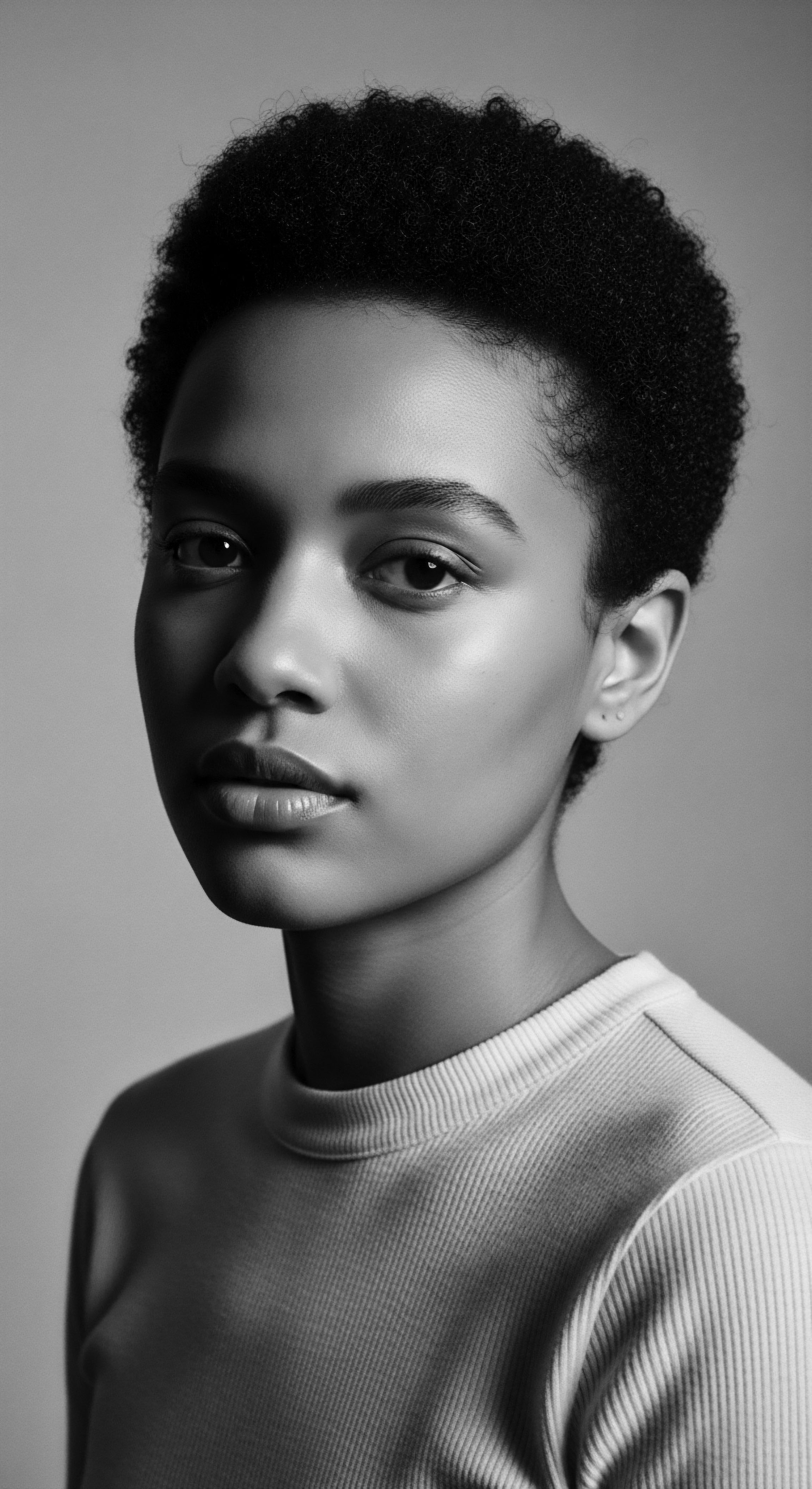
Fundamentals
Within the profound living library of Roothea, the concept of Keratin Denaturation unfolds not merely as a scientific term, but as a deeply resonant echo from the very source of our strands, intimately woven into the heritage of textured hair. At its simplest, Keratin Denaturation refers to a fundamental change in the protein structure of keratin, the primary building block of hair. Imagine keratin as a meticulously coiled and folded thread, forming the very scaffolding of each hair fiber. This protein, rich in sulfur-containing amino acids like cysteine, typically maintains a specific, three-dimensional arrangement, which contributes significantly to the hair’s inherent strength, elasticity, and unique texture.
When we speak of Keratin Denaturation, we are describing the process where this intricate, stable structure begins to unravel, to lose its original, native form. It is a transformation where the delicate bonds that hold the keratin protein in its characteristic shape—such as hydrogen bonds, salt bridges, and the stronger disulfide bonds—are disrupted.
This alteration can manifest in various ways, influencing the hair’s physical attributes. Think of it as a cherished, tightly wound coil of ancestral wisdom, suddenly exposed to forces that cause it to loosen, to stretch, or even to break apart. This unraveling affects the hair’s ability to retain its natural curl pattern, its inherent moisture, and its overall resilience.
The term ‘denaturation’ thus describes this structural shift, a departure from the protein’s original, functional state. It is a process that, while often discussed in scientific isolation, holds profound meaning for those who carry the legacy of textured hair, for it speaks to the very core of how our strands respond to the world, to care, and to the forces of change, both gentle and harsh.
Keratin Denaturation is the fundamental unraveling of hair’s primary protein structure, impacting its natural texture and strength.

Understanding the Hair’s Foundation
To truly grasp the significance of Keratin Denaturation, one must first understand the fundamental composition of hair itself. Hair, a resilient and beautiful extension of our being, is predominantly composed of Keratin Proteins, specifically alpha-keratin. These proteins are organized into complex structures that give hair its unique physical properties. The hair shaft, the visible part of the hair, consists of three main layers ❉ the cuticle, the cortex, and sometimes the medulla.
- The Cuticle ❉ This outermost layer is comprised of overlapping, scale-like cells, much like shingles on a roof, protecting the inner layers. Its integrity is crucial for the hair’s smoothness and shine. When these scales are lifted or damaged, the hair can appear rough and lose its luster.
- The Cortex ❉ The heart of the hair fiber, the cortex, accounts for the majority of the hair’s mass. It is here that the keratin proteins are densely packed in long, twisted chains, forming macrofibrils and microfibrils. These fibrous proteins, held together by various bonds, dictate the hair’s strength, elasticity, and natural curl pattern. The melanin pigments, which determine hair color, also reside within the cortex.
- The Medulla ❉ Present in some hair types, particularly thicker strands, the medulla is the innermost core, often appearing as a hollow channel. Its precise function is not fully understood, but it is believed to play a role in hair’s thermal insulation.
The strength and elasticity of hair are largely attributed to the disulfide bonds within the keratin proteins. These strong chemical bonds act like sturdy bridges, connecting the protein chains and providing structural stability. Alongside these, weaker hydrogen bonds and salt bridges also contribute to the hair’s overall shape and flexibility. The interplay of these bonds is what allows textured hair to form its characteristic coils, kinks, and waves, each pattern a unique expression of ancestral lineage and genetic inheritance.

Intermediate
Delving deeper into the concept, Keratin Denaturation represents a more intricate shift than a mere surface alteration; it signifies a disruption at the molecular level, particularly affecting the delicate protein architecture of the hair’s cortex. This process involves the breaking or weakening of the internal bonds—the hydrogen bonds, salt bridges, and critically, the disulfide bonds—that maintain keratin’s ordered, helical structure. When these bonds yield, the tightly wound alpha-helices of keratin can unwind, leading to a more disordered, random coil conformation. This structural transformation has tangible consequences for the hair fiber, particularly for textured hair, whose inherent beauty lies in its complex, often tightly coiled formations.
The impact of Keratin Denaturation extends beyond simple aesthetics; it compromises the hair’s fundamental mechanical properties. Hair that has undergone significant denaturation often exhibits reduced tensile strength, meaning it becomes more prone to breakage and less able to withstand the stresses of styling or environmental exposure. Its elasticity, the ability to stretch and return to its original shape, diminishes, leading to a brittle feel.
Furthermore, the hair’s porosity can increase, making it more susceptible to moisture loss and less effective at retaining the beneficial oils and traditional concoctions that have nourished textured hair for generations. The meaning of this process, therefore, encompasses a weakening of the hair’s natural defenses, a loss of its inherent resilience, and a departure from its optimal state of health and vibrancy.
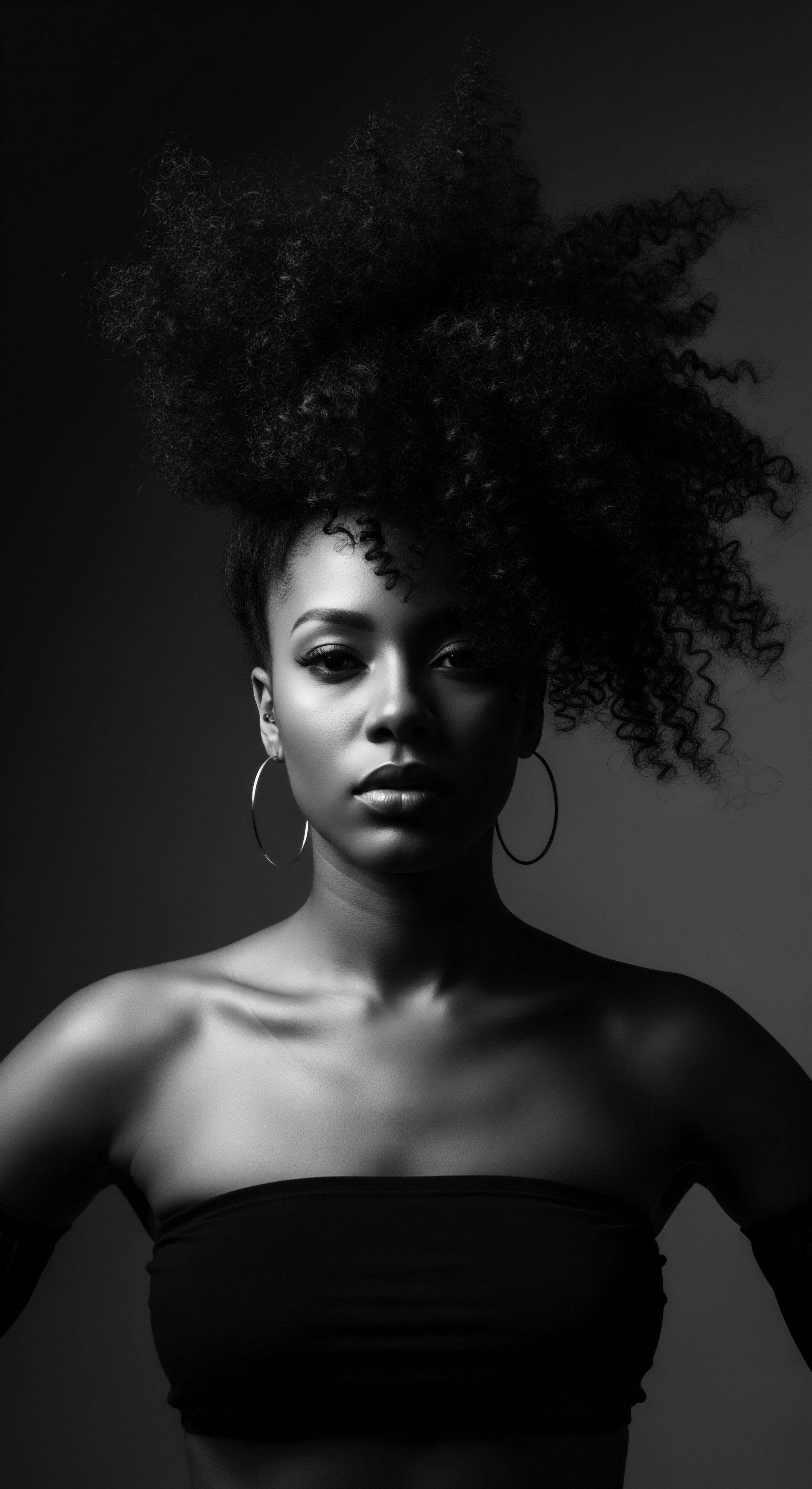
Agents of Change ❉ Factors Influencing Denaturation
Various factors can act as agents of Keratin Denaturation, each carrying its own historical and cultural weight, especially within the context of textured hair care. These agents can be broadly categorized into thermal, chemical, and mechanical stressors, often intertwined with the choices and pressures faced by individuals with Black and mixed-race hair. The historical trajectory of hair care within these communities reveals a complex relationship with practices that, while sometimes offering desired aesthetic outcomes, could inadvertently contribute to denaturation.
- Thermal Stress ❉ The application of high heat, whether from traditional hot combs or modern flat irons, directly impacts the hydrogen bonds within the keratin structure. These bonds are sensitive to temperature changes, and excessive heat can cause them to break and reform in a straightened configuration. While this offers temporary smoothing, repeated or extreme heat exposure can lead to irreversible damage and denaturation of the keratin, leaving the hair brittle and prone to breakage. The historical adoption of hot combs, for instance, offered a means of achieving straightened styles, yet often at the cost of the hair’s long-term integrity.
- Chemical Treatments ❉ Chemical agents are perhaps the most potent drivers of Keratin Denaturation, specifically targeting the strong disulfide bonds. Hair relaxers, a prominent part of Black hair history, utilize alkaline chemicals like sodium hydroxide or guanidine hydroxide to permanently break these bonds, allowing the hair to be restructured into a straight form. This process, while effective in altering texture, inherently involves a significant degree of denaturation. Similarly, perms and coloring agents can also disrupt the keratin structure, leading to changes in the hair’s strength and texture.
- Mechanical Stress ❉ Constant tension, aggressive combing, or tight styling can also contribute to denaturation over time. While less direct than heat or chemicals, the repeated stretching and manipulation of hair fibers can weaken their internal structure, particularly in textured hair which is naturally more fragile at its points of curvature. Ancestral practices often included gentle detangling and protective styles, recognizing the delicate nature of the hair.
Denaturation compromises hair’s mechanical strength and elasticity, increasing its susceptibility to breakage and moisture loss.
The understanding of these agents of change is not merely academic; it is a vital part of understanding the choices and challenges faced by individuals with textured hair throughout history. The pursuit of certain aesthetic ideals, often influenced by Eurocentric beauty standards, led to the widespread use of chemical straighteners. A 2023 survey revealed that Black respondents reported the most frequent use of chemical straighteners compared to other racial groups, with 61% indicating they used them because they felt “more beautiful with straight hair”.
This statistic powerfully illuminates the societal pressures that often compelled individuals to engage in practices that, unbeknownst to them, could lead to significant Keratin Denaturation and long-term hair health concerns. This historical context provides a deeper meaning to the scientific explanation of denaturation, grounding it in lived experiences and cultural narratives.
The impact of chemical relaxers, in particular, on textured hair has been a subject of increasing scrutiny. These products, which permanently alter the hair’s structure, have been linked to various health concerns beyond just hair damage, including uterine fibroids and certain cancers, a disproportionate risk for Black women who have historically been the primary consumers of these products. This connection underscores the critical importance of understanding Keratin Denaturation not just as a biological phenomenon, but as a concept deeply embedded in the social, economic, and health narratives of Black and mixed-race communities.
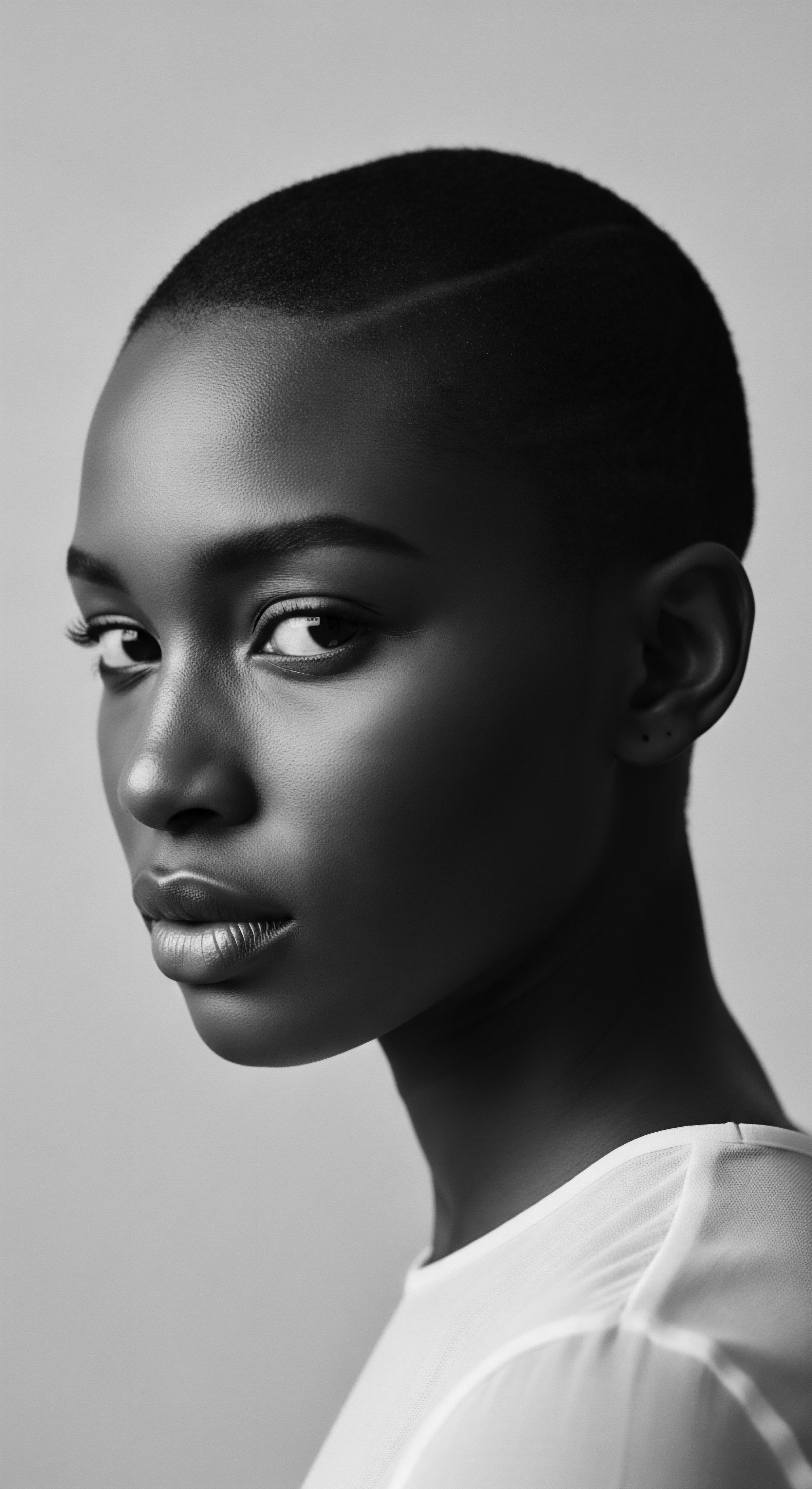
Academic
The academic definition of Keratin Denaturation, as explored within Roothea’s comprehensive framework, transcends a mere biological description; it is a rigorous explication of the complex physiochemical alterations that profoundly redefine the structural integrity and functional capabilities of the hair fiber, particularly pertinent to the intricate architecture of textured hair. This process denotes the irreversible disruption of keratin’s native secondary, tertiary, and quaternary structures, characterized by the uncoiling of alpha-helical segments into more disordered random coil conformations and the cleavage or destabilization of critical covalent and non-covalent bonds. Foremost among these are the highly stable Disulfide Bonds (S-S bonds) formed between cysteine residues, which confer significant mechanical strength and shape retention to the hair. Denaturation, therefore, signifies a fundamental shift from a highly organized, robust biopolymer network to a more fragmented and pliable state, altering the hair’s viscoelastic properties, surface hydrophobicity, and ultimately, its aesthetic and tactile characteristics.
The meaning here extends to the profound implications for hair’s resilience, its capacity for moisture management, and its inherent structural memory, all of which are uniquely expressed in the diverse morphologies of textured hair. This scholarly interpretation also encompasses the nuanced understanding of how external stressors—thermal, chemical, and even prolonged mechanical forces—induce these specific molecular rearrangements, leading to observable changes in hair’s appearance and behavior.
The scientific elucidation of Keratin Denaturation is particularly relevant when examining its historical application within hair alteration practices across the African diaspora. For centuries, the desire to manipulate hair texture, often influenced by imposed Eurocentric beauty standards, led to the development and widespread use of various methods that, at their core, induced keratin denaturation. Early practices, such as the use of intense heat via heated combs, aimed to temporarily reconfigure hydrogen bonds, while the advent of chemical relaxers in the early 20th century marked a more aggressive, permanent denaturation through the breaking of disulfide bonds. Garrett A.
Morgan Sr.’s accidental discovery in 1913, leading to the first chemical relaxer containing lye, fundamentally changed the landscape of Black hair care by offering a permanent straightening solution, though often accompanied by significant hair damage and scalp irritation. This historical context provides a compelling lens through which to analyze the multifaceted impact of denaturation, moving beyond its molecular mechanics to consider its deep sociological and cultural ramifications within communities that have long navigated the politics of hair.
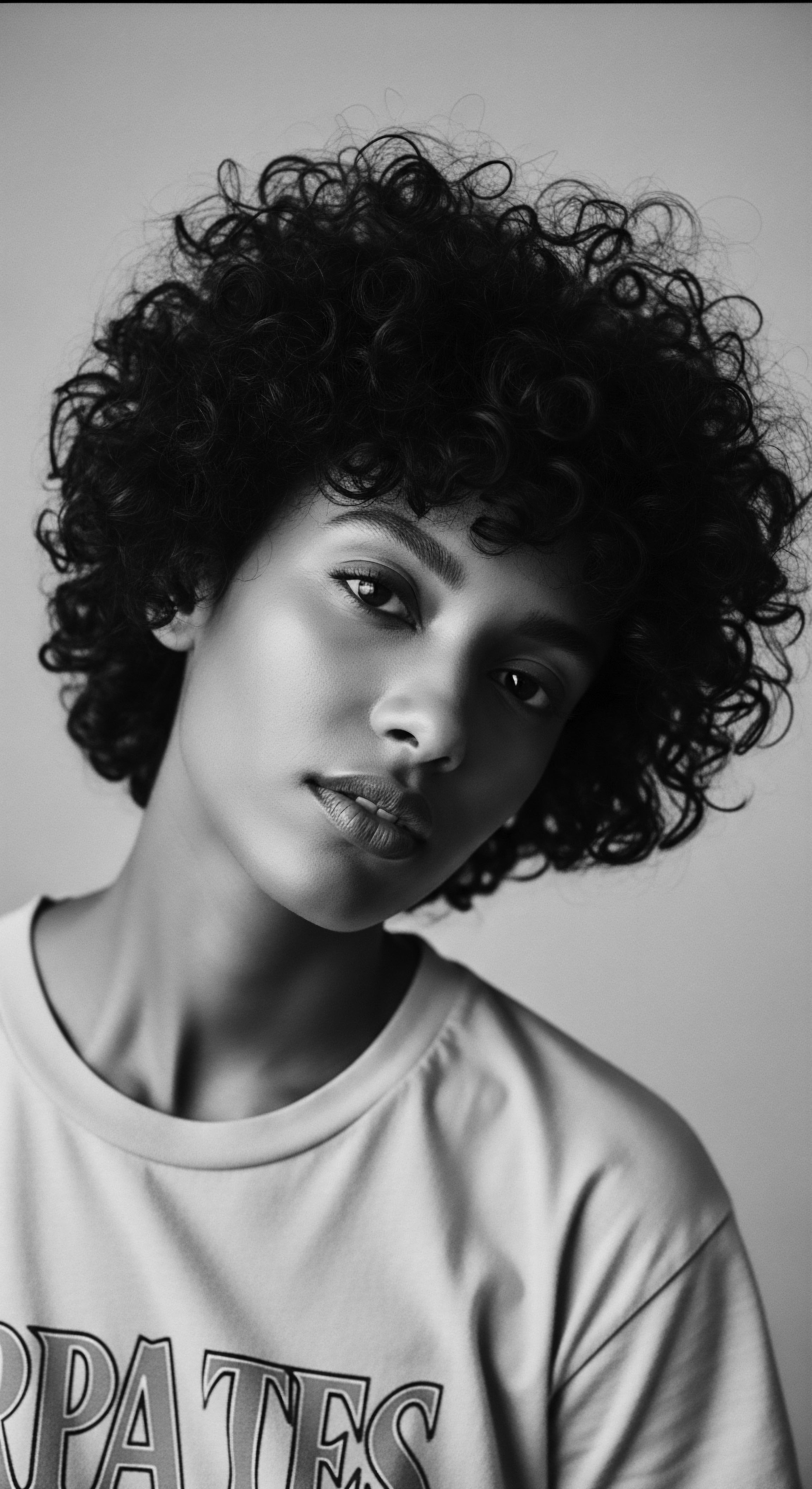
Molecular Architecture and the Denaturation Cascade
The human hair fiber, a remarkable biological composite, derives its strength and unique texture from the precise hierarchical organization of keratin proteins. At the innermost level, alpha-keratin polypeptides coil into alpha-helices, which then twist together to form two-stranded coiled-coils. These coiled-coils assemble into protofilaments, which further aggregate into protofibrils, and then into larger Intermediate Filaments (IFs).
These IFs are embedded within a matrix of amorphous proteins rich in sulfur, collectively forming the keratin macrofibrils within the cortex. The stability of this intricate structure is maintained by a network of chemical bonds:
- Disulfide Bonds ❉ These are covalent bonds formed between the sulfur atoms of two cysteine residues. They are the strongest bonds in hair keratin, providing significant structural rigidity and contributing immensely to the hair’s shape memory and resistance to external forces. Their integrity is paramount for maintaining the natural curl pattern of textured hair.
- Hydrogen Bonds ❉ Weaker, non-covalent bonds formed between hydrogen and electronegative atoms (like oxygen or nitrogen). These bonds are numerous and collectively contribute to the hair’s flexibility and its ability to swell with water. They are easily broken by water and heat, explaining why wet hair can be reshaped or why heat styling offers temporary straightening.
- Salt Bridges ❉ Ionic bonds formed between oppositely charged amino acid side chains. These are also non-covalent and contribute to the overall stability of the keratin structure, though they are weaker than disulfide bonds and sensitive to pH changes.
Keratin Denaturation occurs when these bonds are compromised, leading to a cascade of structural changes. High heat, for instance, primarily disrupts hydrogen bonds, causing the alpha-helices to unwind. While some of these bonds can reform upon cooling, prolonged or excessive heat can lead to irreversible damage to the protein structure and even the cuticle, particularly in textured hair. Chemical agents, such as those found in hair relaxers, specifically target and break the disulfide bonds through a process of reduction.
Once these bonds are cleaved, the hair’s natural curl is released, and the hair can be physically straightened. A subsequent neutralizing step then re-forms new disulfide bonds in the hair’s altered, straightened configuration.
The academic understanding of this process reveals that the extent of denaturation dictates the degree of hair alteration and, crucially, the potential for damage. Over-processing with chemicals or excessive heat can lead to significant protein loss, increased porosity, reduced tensile strength, and a permanent weakening of the hair fiber. The consequence is hair that is not only physically altered but also structurally compromised, manifesting as dryness, brittleness, and heightened susceptibility to breakage. This scientific insight offers a profound clarification of the meaning behind the fragility sometimes associated with chemically straightened textured hair, underscoring the deep biological costs associated with historical beauty practices.
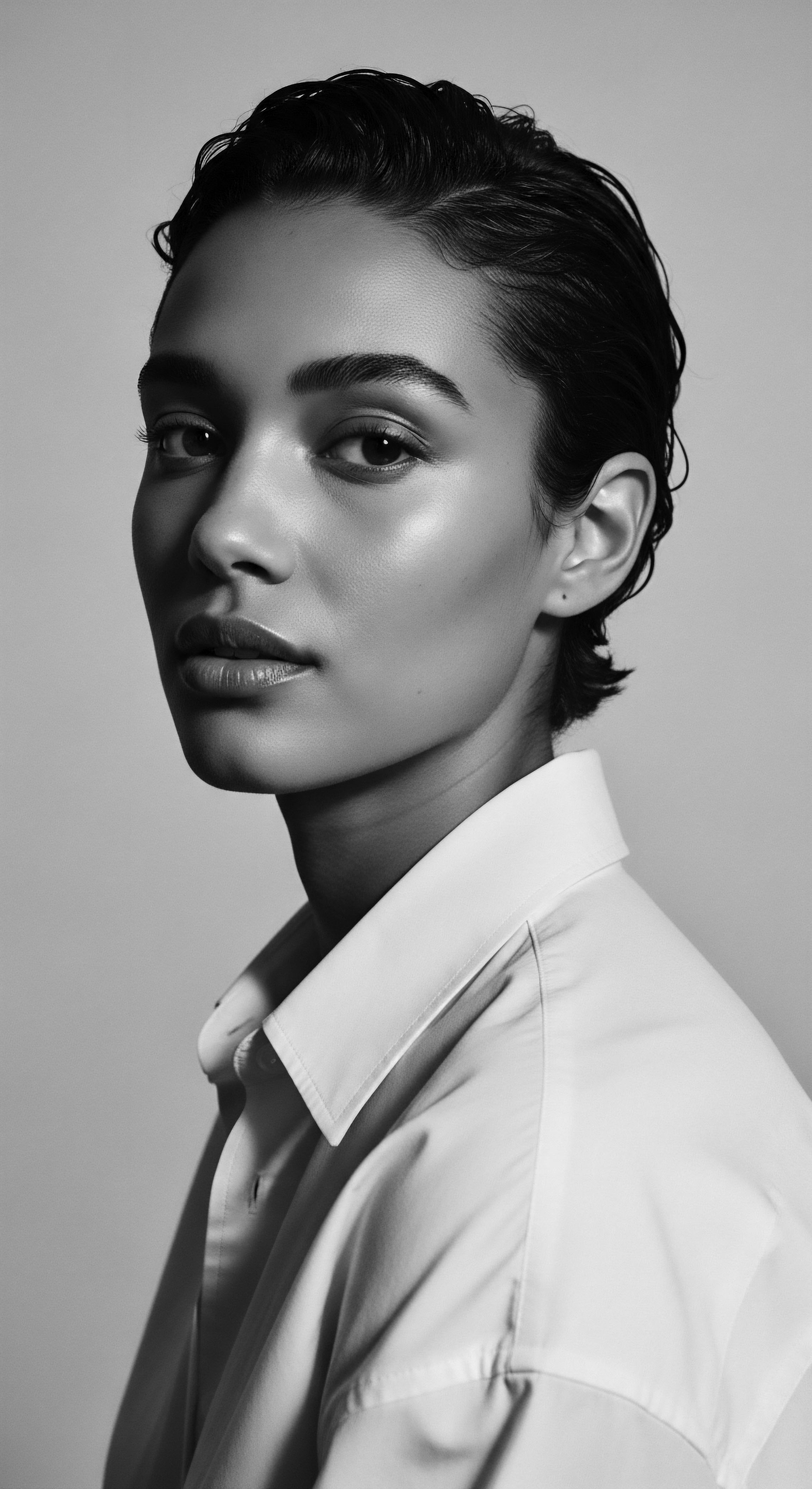
The Sociocultural and Health Implications of Denaturation in Textured Hair
The scientific understanding of Keratin Denaturation gains profound resonance when viewed through the lens of textured hair heritage, particularly within Black and mixed-race communities. The historical pressure to conform to Eurocentric beauty standards often necessitated the use of chemical and thermal straightening methods that inherently induce denaturation. This practice, while offering a pathway to societal acceptance and economic opportunity, came at a significant cost, both to the hair’s health and, increasingly, to the overall well-being of those who used these products.
For generations, the concept of “good hair” was often conflated with straighter textures, creating a hierarchy within the Black community that privileged certain hair types. This societal pressure was so pervasive that, as one study indicates, 80% of Black women believe altering their natural hair is necessary for employment and social expectations.
The widespread and long-term use of chemical relaxers, designed to induce significant keratin denaturation, has now been linked to serious health concerns. Research points to a disturbing correlation between frequent chemical hair relaxer use and an increased risk of certain cancers, including uterine, ovarian, and breast cancers. A study published in Environmental Health Perspectives found that women who used hair relaxers at least five times a year had more than double the incidence of uterine cancer rates compared to those who never used them.
This alarming data transforms the academic understanding of keratin denaturation from a purely biochemical process into a critical public health and social justice issue. The chemicals involved, such as formaldehyde-releasing agents, phthalates, and lye, are known endocrine disruptors and carcinogens.
| Aspect Core Philosophy |
| Traditional/Ancestral Practices (Pre-Denaturation Focus) Nourishment, protection, celebration of natural texture, and spiritual connection. Focus on maintaining hair's inherent strength and vitality. |
| Modern Chemical Alteration (Denaturation Inducing) Texture alteration, often driven by aesthetic conformity. Focus on achieving a straightened or chemically curled appearance. |
| Aspect Key Ingredients/Methods |
| Traditional/Ancestral Practices (Pre-Denaturation Focus) Natural oils (e.g. shea butter, coconut oil), plant extracts (e.g. henna, hibiscus, fenugreek), gentle braiding, twisting, and coiling techniques. Emphasized moisture retention and scalp health. |
| Modern Chemical Alteration (Denaturation Inducing) Alkaline chemicals (sodium hydroxide, guanidine hydroxide), thioglycolates, formaldehyde-releasing agents. High heat styling tools. |
| Aspect Impact on Keratin |
| Traditional/Ancestral Practices (Pre-Denaturation Focus) Aimed at strengthening existing keratin bonds, enhancing flexibility, and preventing moisture loss, thus preserving the protein's native structure. |
| Modern Chemical Alteration (Denaturation Inducing) Deliberately breaks disulfide bonds and alters hydrogen bonds, leading to significant and often irreversible keratin denaturation. |
| Aspect Long-Term Hair Health |
| Traditional/Ancestral Practices (Pre-Denaturation Focus) Promotes scalp health, minimizes breakage, encourages growth, and maintains natural moisture balance. Hair remains strong and resilient. |
| Modern Chemical Alteration (Denaturation Inducing) Can lead to weakened hair, increased porosity, chronic dryness, breakage, and potential scalp irritation. Long-term health risks are increasingly documented. |
| Aspect This comparison highlights the profound divergence in approaches to hair care, where ancestral wisdom prioritized preservation and vitality, while certain modern methods introduced denaturation as a means to achieve specific aesthetic outcomes, often with unintended consequences for hair and health. |
The cultural meaning of Keratin Denaturation, therefore, becomes a narrative of resilience and reclamation. The Natural Hair Movement, which gained significant momentum in the 1960s and 70s during the Civil Rights Movement, represented a powerful rejection of these imposed standards and a celebration of natural textures. This movement sought to redefine beauty on Black women’s own terms, fostering a deeper appreciation for the inherent beauty of coiled, kinky, and curly hair. Understanding denaturation academically allows for a more informed dialogue about these historical choices and contemporary shifts, providing a scientific basis for advocating for hair practices that honor and protect the hair’s natural integrity, rather than compromising it for societal acceptance.

Reflection on the Heritage of Keratin Denaturation
As we close this chapter in Roothea’s living library, the contemplation of Keratin Denaturation extends far beyond its scientific definition; it becomes a profound meditation on the enduring heritage and evolving significance of textured hair. This concept, once confined to the laboratory, now resonates with the echoes of ancestral wisdom, the tender threads of communal care, and the unbound helix of identity. The journey of understanding denaturation, from elemental biology to its deep cultural ramifications, reveals how our strands carry not just protein structures, but also the weight of history, the resilience of a people, and the vibrant stories of self-expression.
The story of Keratin Denaturation in textured hair is a testament to the adaptive spirit of Black and mixed-race communities. For generations, individuals navigated societal pressures that often devalued their natural coils and kinks, leading to the adoption of practices that, while achieving desired appearances, inadvertently altered the very essence of their hair’s keratin. Yet, within this narrative of alteration, there is also a powerful counter-narrative of resistance and reclamation.
The resurgence of natural hair movements, a vibrant return to ancestral aesthetics and care rituals, underscores a collective yearning to honor the hair’s inherent design, to protect its structural integrity, and to celebrate its unique heritage. This shift is not merely a trend; it is a profound act of self-love and cultural affirmation, recognizing that the health of our hair is inextricably linked to our holistic well-being and our connection to those who came before us.
The insights gained from understanding denaturation empower us to make informed choices, to distinguish between practices that nurture and those that diminish the hair’s vitality. It is a call to re-evaluate the products and techniques we use, prioritizing those that align with the hair’s natural biology and honor its ancestral legacy. The wisdom of generations, often passed down through oral traditions and communal rituals, intuitively understood the delicate balance required to maintain hair health, long before the scientific mechanisms of keratin were fully elucidated. Today, modern science often affirms these ancient practices, revealing the deep connection between holistic care and the preservation of the hair’s inherent strength and beauty.
In this ongoing dialogue between science and heritage, Keratin Denaturation serves as a poignant reminder that our hair is more than just fibers; it is a living archive, a repository of stories, struggles, and triumphs. It is a symbol of identity, a canvas for creativity, and a testament to the enduring spirit of those who have nurtured and celebrated textured hair through the ages. As we continue to unravel the complexities of our strands, we also reaffirm our connection to a rich and vibrant lineage, ensuring that the soul of each strand, in all its coiled glory, remains unbound and revered for generations to come.
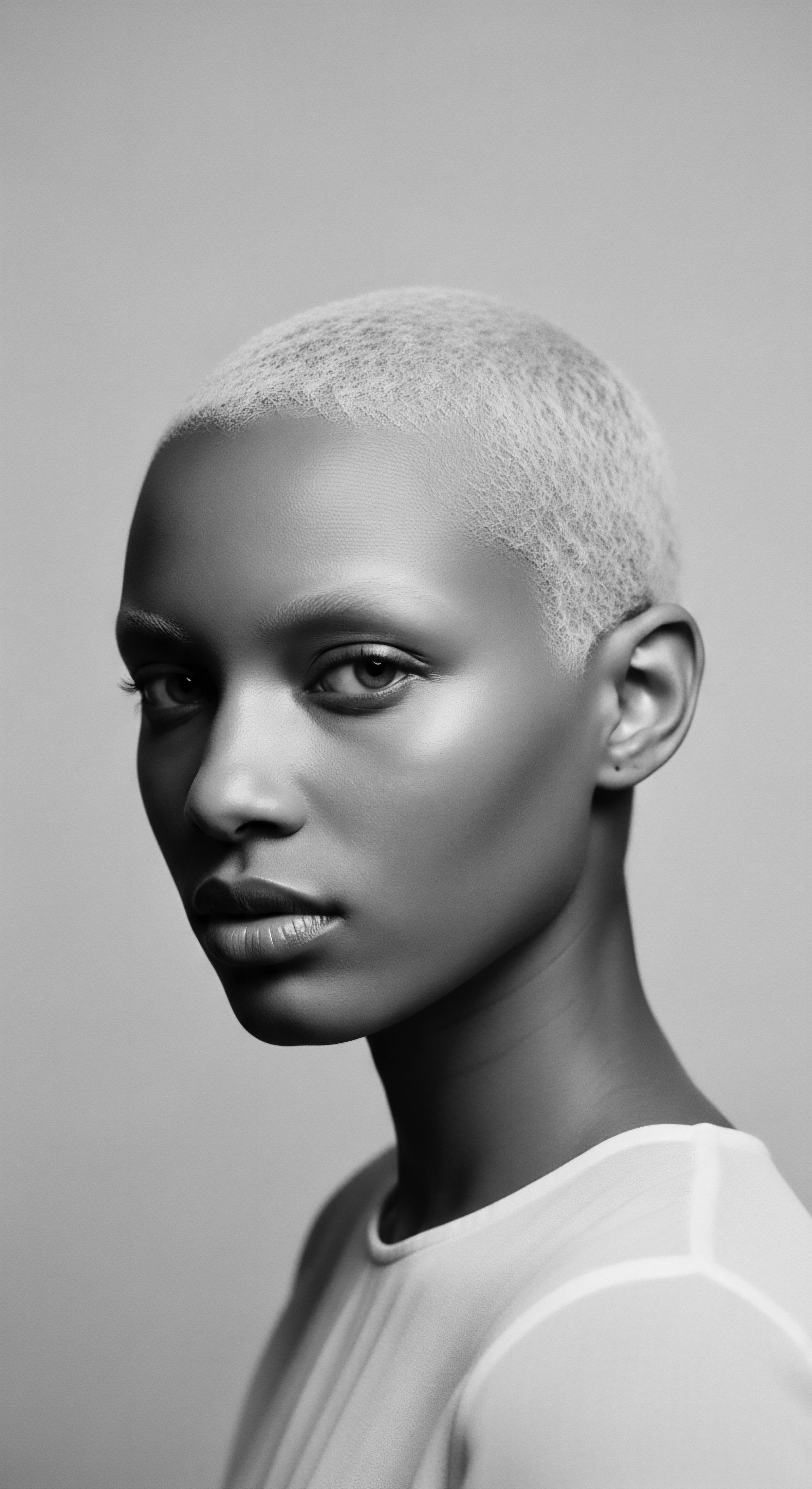
References
- Sanad, M. N. et al. (2019). Effects of chemical straighteners on the hair shaft and scalp. PubMed Central.
- Byrd, A. D. & Tharps, L. D. (2014). Hair Story ❉ Untangling the Roots of Black Hair in America. St. Martin’s Press.
- Shetty, S. et al. (2024). Effects Of Chemical Treatments On The Hair Shaft And Scalp – A Clinico Epidemological Study. International Journal of Current Research.
- Yang, X. et al. (2022). Improving the Mechanical Properties of Damaged Hair Using Low-Molecular Weight Hyaluronate. MDPI.
- White, V. (n.d.). Celebrating the history and beauty of afro-textured hair. Issuu.
- Hope, C. O. (2009). Hair Matters ❉ Beauty, Power, and Black Women’s Consciousness. Duke University Press.
- Sanad, M. N. et al. (2019). Health improvement of human hair and their reshaping using recombinant keratin K31. International Journal of Biological Macromolecules.
- Byrd, A. D. & Tharps, L. D. (2001). Hair Story ❉ Untangling the Roots of Black Hair in America. St. Martin’s Press.
- Halal, J. (2008). Hair Structure and Chemistry Simplified. Cengage Learning.
- CRLab. (n.d.). Structure and chemical composition of hair. CRLab.
- Wilkinson, J. B. & Moore, R. J. (1990). Harry’s Cosmetology. Chemical Publishing Co.
- The Naked Chemist. (2023). Chemical Hair Straightening 101. The Naked Chemist.
- TIPS & TOES. (n.d.). A Complete Guide On Protein Treatment For Hair In Salon. TIPS & TOES.
- Dias, M. F. R. G. et al. (2008). Chemical and physical treatments damage Caucasian and Afro‐ethnic hair fiber ❉ analytical and image assays. Journal of Cosmetic Science.
- Robbins, C. R. (1994). Chemical and Physical Behavior of Human Hair. Springer-Verlag.
- deNavarre, M. G. (1975). The Chemistry and Manufacture of Cosmetics, Second Edition, Vol. IV. Continental Press.
- Schoon, D. (2008). Hair Structure and Chemistry, Revised. Cengage Learning.
- Donaldson, C. (n.d.). Hair Alteration Practices Amongst Black Women and the Assumption of Self-Hatred. The Review of Undergraduate Research in Agricultural and Environmental Sciences.
- Rosado, S. (2003). The Grammar of Hair ❉ Hair as a Site of Diasporic Transindividuation. York University.
- The Kurl Kitchen. (2024). The Cultural Significance Of Natural Hair In Different Communities. The Kurl Kitchen.
- Healthline. (n.d.). Permanent Hair Straightening ❉ Types and Side Effects. Healthline.
- Simmons, K. E. (2025). Pajones, Afros, and Rizos ❉ Dominican Women, Afro-Dominicanidad, and the Global Natural Hair Movement. Today@CC.
- Kuzuhara, A. (2005). Analysis of structural change in keratin fibers resulting from chemical treatments using Raman spectroscopy. Biopolymers.
- Matjila, C. R. (2020). The meaning of hair for Southern African Black women. University of the Free State.
- Nature’s Little Secret. (2025). The History of Black Hair Care ❉ Trailblazers Who Paved the Way. Nature’s Little Secret.
- Schoon, D. (n.d.). Hair Structure and Chemistry, Revised. Goodreads.
- Kamara, Y. (n.d.). Hair as Freedom. Lolwe.
- White, A. J. et al. (2023). Hair Relaxer Use and Risk of Uterine Leiomyomata, The Black Women’s Health Study. Environmental Health Perspectives.
- Madame La Présidente. (2024). Breaking down the Science ❉ How Protein Hair Treatments Promote Hair Health. Madame La Présidente.
- Byrd, A. D. & Tharps, L. D. (2014). Hair Story ❉ Untangling the Roots of Black Hair in America. St. Martin’s Press.
- African American Registry. (n.d.). Black Hair Care and Its Culture, a story. African American Registry.
- Hilaris Publisher. (2018). Curl Reversion and Damage ❉ The Effect of Different Temperature Treatments on Hair. Hilaris Publisher.
- Longdom Publishing SL. (n.d.). The Role of Keratin in Protecting Hair. Longdom Publishing SL.
- Nnaji, J. C. et al. (2024). Cosmetopoeia of African Plants in Hair Treatment and Care ❉ Topical Nutrition and the Antidiabetic Connection?. MDPI.
- Madame La Présidente. (2024). Proteins for hair. Madame La Présidente.
- Alok Vij, M. (2022). What You Need to Know About Keratin Treatments. Cleveland Clinic Health Essentials.
- Drugwatch.com. (2025). Chemical Hair Relaxers & Their Growing Health Concerns. Drugwatch.com.
- Weitz & Luxenberg. (n.d.). Chemical Hair Relaxer Side Effects ❉ Related Injuries and Cancers. Weitz & Luxenberg.
- InformedHealth.org. (2023). In brief ❉ What is the structure of hair and how does it grow?. NCBI.
- Amazon.com. (n.d.). Hair Structure and Chemistry, Revised ❉ Schoon, Douglas ❉ 9781562531225. Amazon.com.
- Harvard T.H. Chan School of Public Health. (2024). Uncovering the dangers of hair products marketed to Black women, girls. Harvard T.H. Chan School of Public Health.
- Nnaji, J. C. et al. (2024). Cosmetopoeia of African Plants in Hair Treatment and Care ❉ Topical Nutrition and the Antidiabetic Connection?. ResearchGate.
- Harper’s BAZAAR. (2023). Everything You Need To Know About Keratin Hair Treatments. Harper’s BAZAAR.
- Akalewold, S. et al. (2025). Plants used for hair and skin health care by local communities of Afar, Northeastern Ethiopia. Ethnobotany Research and Applications.
- Oumokhtar, B. et al. (n.d.). Ethnobotanical Survey of Medicinal Plants used in the Treatment and Care of Hair in Karia ba Mohamed (Northern Morocco). ResearchGate.
- Oumokhtar, B. et al. (n.d.). Ethnobotanical Survey of Medicinal Plants used in the Treatment and Care of Hair in Karia ba Mohamed (Northern Morocco). Journal of Medicinal Plants Studies.
- BET. (2023). Black Women Weigh Emerging Risks of ‘Creamy Crack’ Hair Straighteners. BET.
- ResearchGate. (2024). Internal structural changes in keratin fibres resulting from combined hair waving and stress relaxation treatments ❉ A Raman spectroscopic investigation. ResearchGate.
